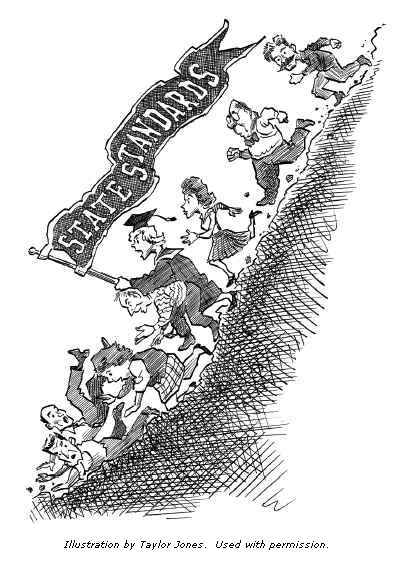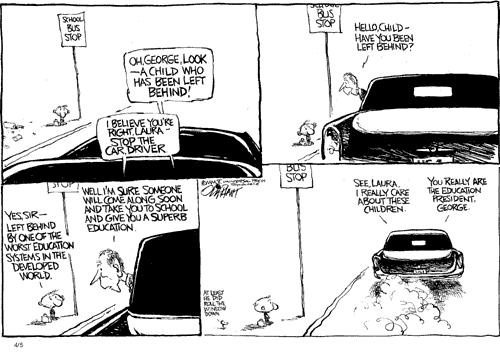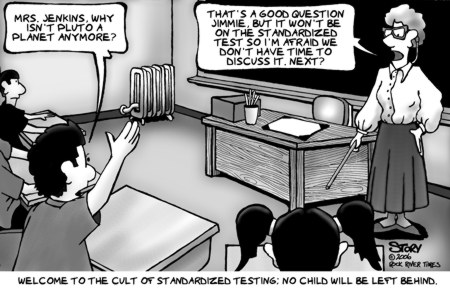To analyze the way that medium changes the way an argument is made in my final project I decided to do a blog series on the my chosen topic. If you have been keeping up with blog you have seen that my topic for this project is the No Child Left Behind education policy and why and how it needs to be changed. I wrote my first paper for my English 102 class about this topic and I decided to transfer this topic and the research I did into my project. The basic requirements of the project were to use a different medium than writing a paper in order to re argue an argument. We were required to also write a paper on the subject but by doing this project the paper got extended and re-argued until it was almost something completely different. My medium of using an online blog series to argue my point was completely different than arguing my point a thought out research paper and I also used different techniques to argue my material.
The main way that my blog project was different than writing a paper was it allowed for language to be more casual. A blog is by nature a more casual medium than writing a formal paper so my writing was way more casual to adhere to that than I was when I wrote the paper. The other way that the medium changed my argument was it allowed others to respond to what I had to say. I invited my class and my Introduction to Education class to check out my blog and comment on it and participate in discussions but it never really got off of the ground. I had one student comment on a piece of the blog and I commented back and I hoped that was going to lead to a discussion but it didn’t. If there would have been a collaborative discussion on the blog I think my project would have changed tremendously. Another way the blog medium changed my argument is because I did video logs of myself and one of peer and one of an expert. This allowed for what I had to say to be more personal and more entertaining. Watching or listening to someone talk about an experience they had with something is a lot more interesting than reading the same information. The comment made by a fellow student on my blog responded to that change of feel between reading a blog post and watching someone talk about their personal experience. She said that she enjoyed the video so much better than reading even though it was just me talking to a camera about what I experienced.
I incorportated my research differently into this project by splitting posts up and putting in the research at the appropriate points. I also used an interview that I used as a source in my paper as a video interview which meant I didn’t have to cite what was being said in that video. I also used the information that I wrote in my paper and the sources used and said them before I said my information in one of my video experiences. I was able to re alliterate the source without having to write it out and make a bulky sentence in my blog posts.
Ultimately, even though the blog posts were writing just like a paper is, I think the medium of being on a blog changed my argument a lot. Writing in a different medium required different techniques and I responded to the information differently than I would have in a paper.









